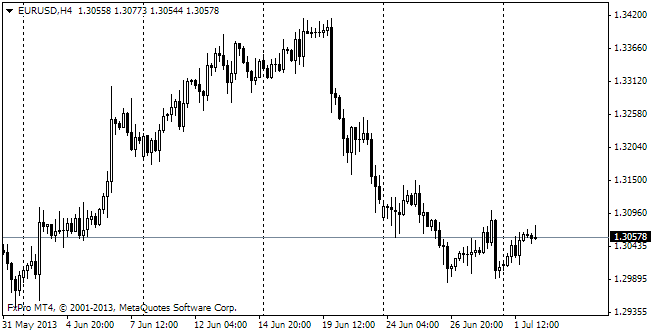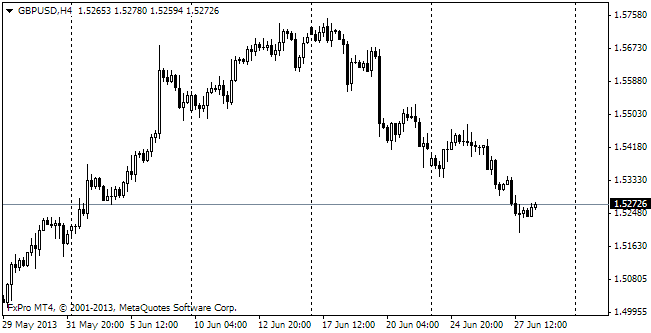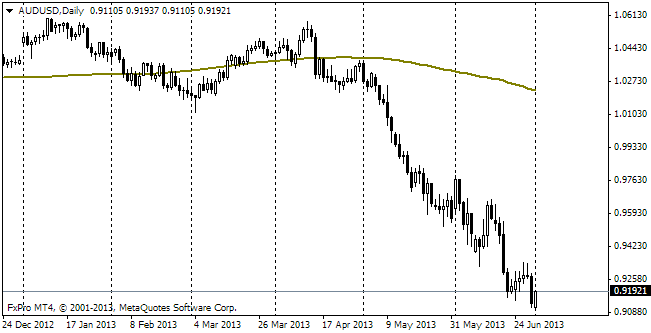EUR/usd
Having hit a new high, eurusd has again stalled. Now the market is consolidating around 1.3800, a week ago it was 1.3650 and before that from September 19 till October 17 trading had been held at 1.3500. The same picture, though at a larger scale, was observed in the market during the superrally of 2005-2008. Then the market was pushed by the difference in the ECB's and Fed's policies. The former was extremely vigilant regarding inflation under the guidance of Jean-Claude Trichet. The latter had already fallen into the trap of a housing and commodity bubble, when on the one hand it faced strong inflation pressure and on the other hand – poor employment growth. Yet times have changed. Now the ECB can't be concerned about inflation, which is under the pressure of low demand and relatively stable commodity prices. The situation in the USA is pretty much the same, however here we have understanding of the Fed's officials that the situation of mid 2000s shouldn't be allowed again. The housing market shouldn't be given an opportunity to uncontrollably grow. We concluded it from the intentions to cut purchasing before the summer, when the housing sector indicators hit the pre-crisis levels for the first time. Yet, those intentions alone were quite enough for mortgage interest rates to go up (and for sales to go down). Now it will be logical if the Fed lays emphasis on the policy toughening in case of a price or sales turn in the housing market. Please note that we should hardly hope to see interest rates at historic highs as it was last summer. Then it was an ideal combination of the relatively strong economy and abundance of monetary instruments to help the economy and the housing market, in particular. This week the fomc arranges another meeting. On Wednesday we will get a fresh commentary of the Fed regarding the monetary policy. As opposed to September, now the Committee is not expected to reduce the bond-buying programme. So, we only need to track the hints if this date hasn't been postponed indefinitely until 2014 due to the government shutdown and a possible repetition of the situation already in February-March.

GBP/USD
The sterling fails to keep up with the euro. Unlike the latter, the British currency actually closed out the week slightly above the opening levels. Even Friday's news about the GDP growth by 0.8% didn't keep the market inspired for long. The thing is that Britain had already shown good results in other, leading indicators, so the markets managed to get on this train in due time. Despite all this positive sentiment regarding Britain and an upward revision of growth forecasts, we still think that the economy will be slowing down in the next two quarters, which will leave the sterling among the laggards. In regard to the rates it means that if there is growth to the yearly highs, it will be a good moment to sell.

USD/JPY
Fresh historic highs in the US indices on Friday encouraged optimism in the Asian exchanges. usdjpy grew from the local lows below 97.0 and is now trading at 97.60. This week we expect unemployment and retail sales statistics. Also the BOJ is to have its regular meeting, which actually is unlikely to bring any changes.

AUD/USD
The Australian dollar seems to have crossed the turning point. But it is not quite clear yet, as the pair had gone from 0.9757 down to 0.9571 by the end of the week, which is very little to balance the growth of 8 figures and a half. This week we don't expect any important news besides the release of PPI, which together with the consumer inflation data, published last week, can weaken the dovish tone of the RBA. Anyway, they are hardly able to make the RBA change the interest rate.
